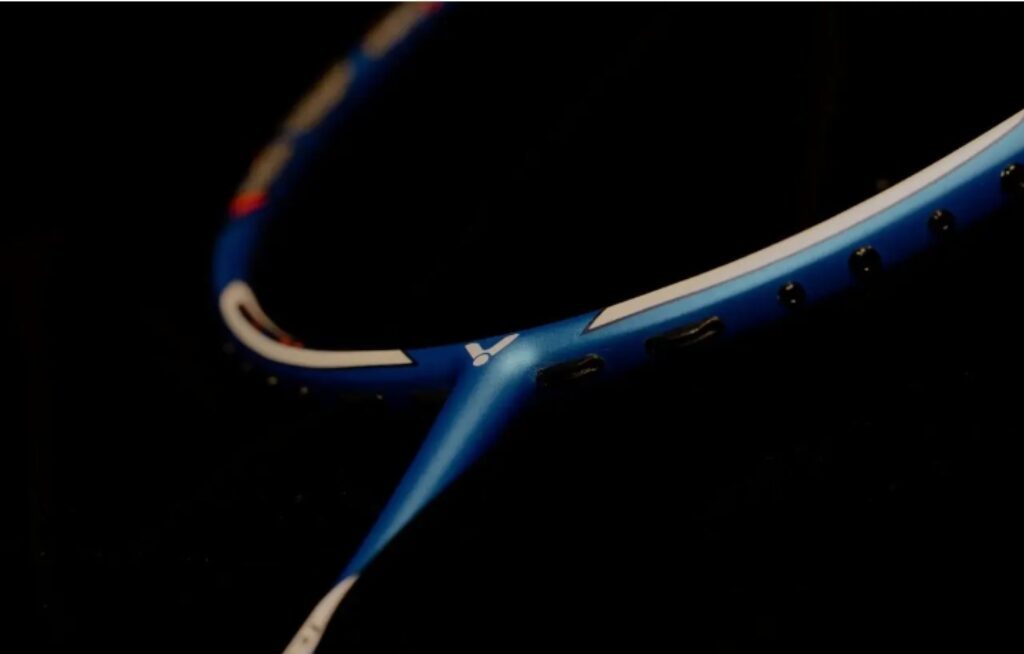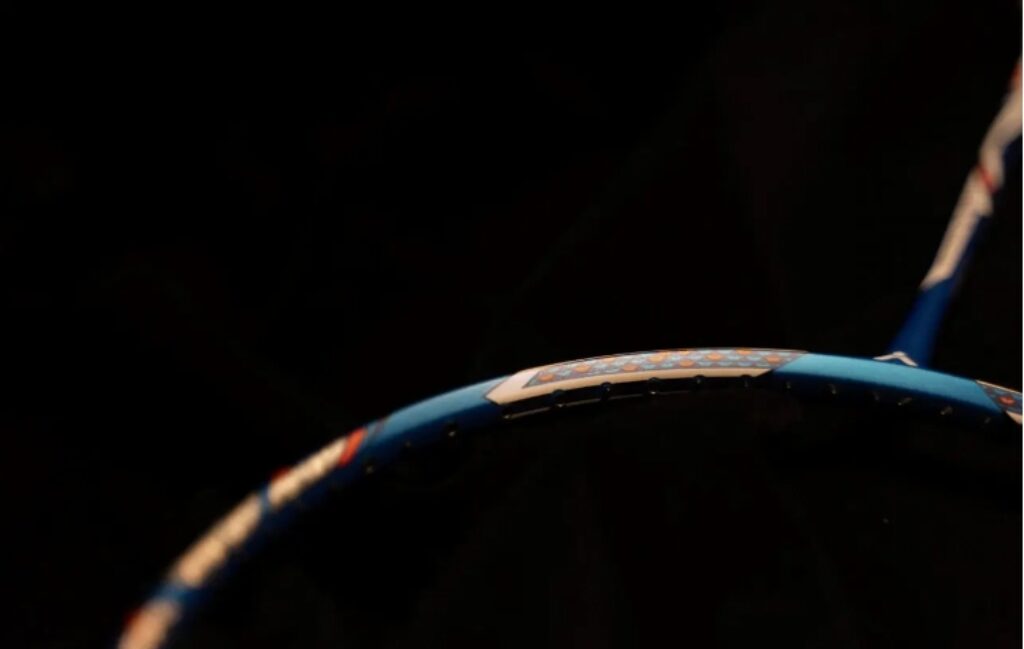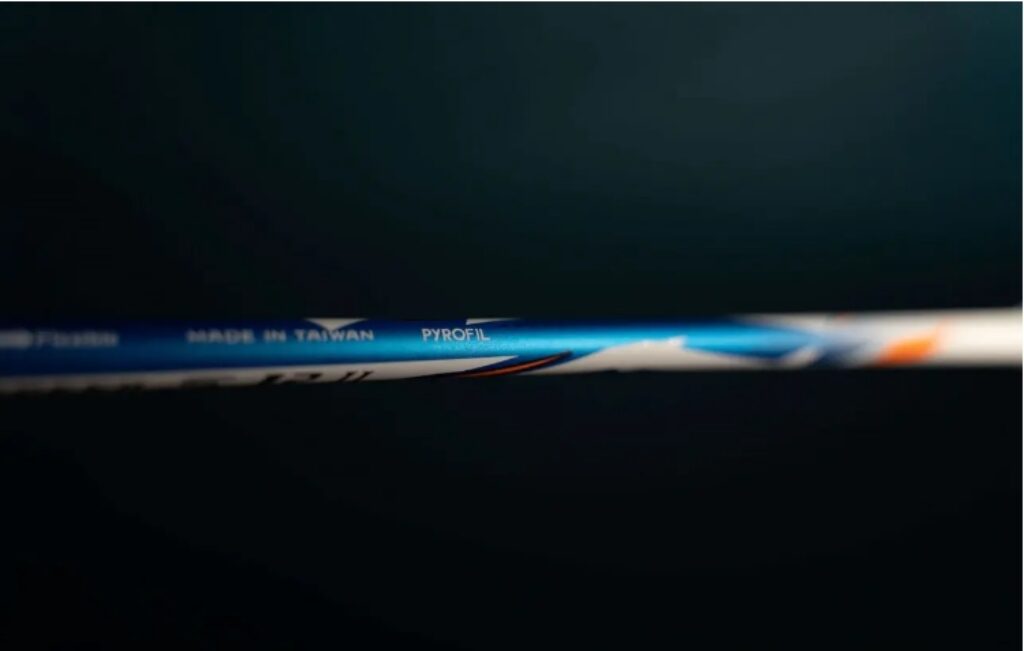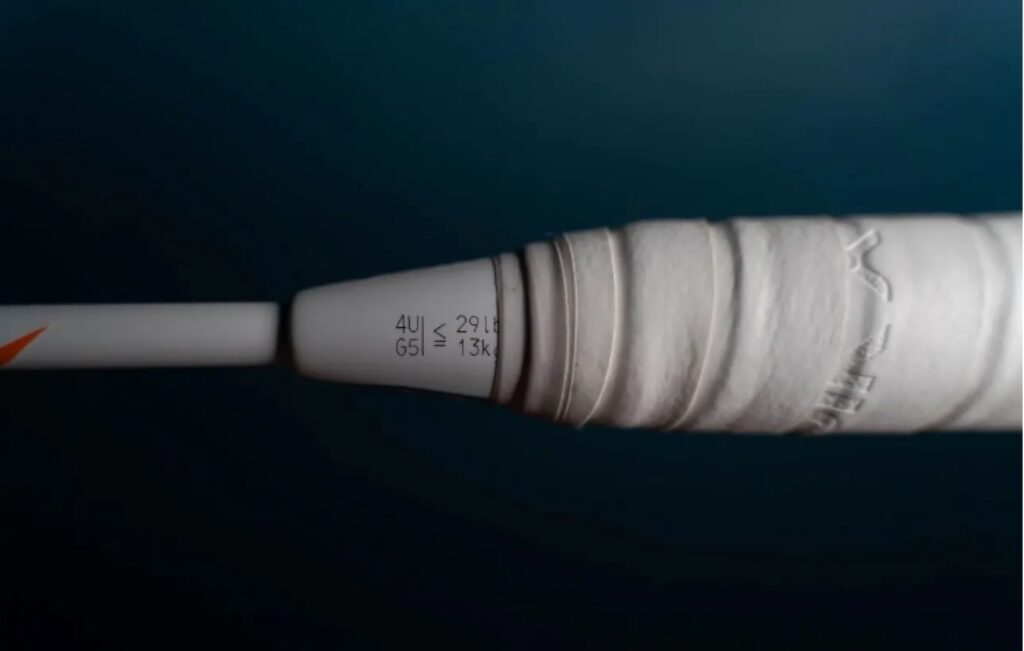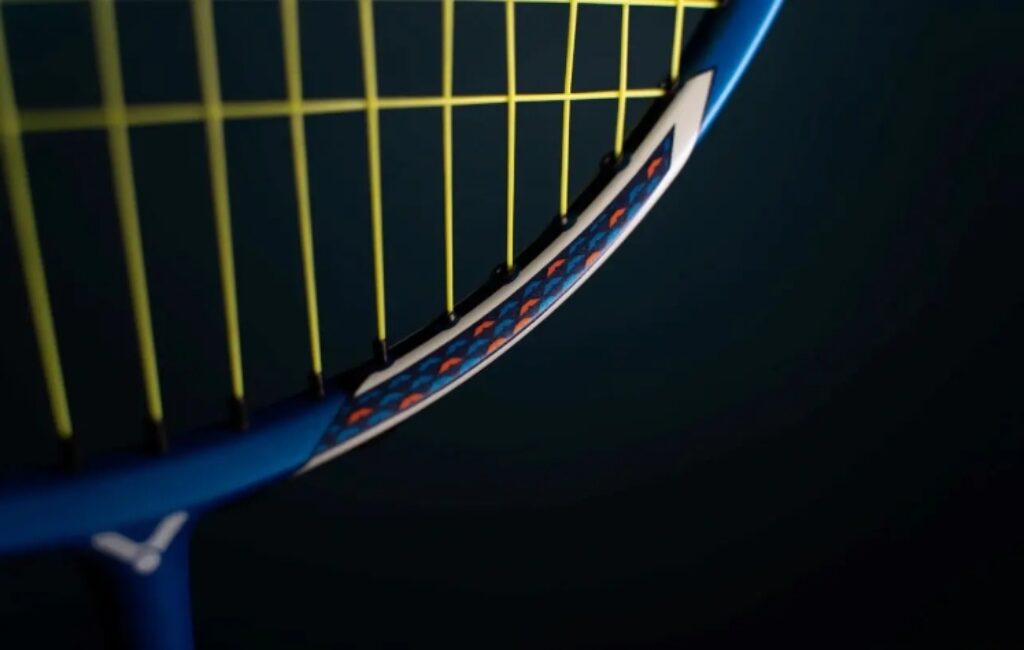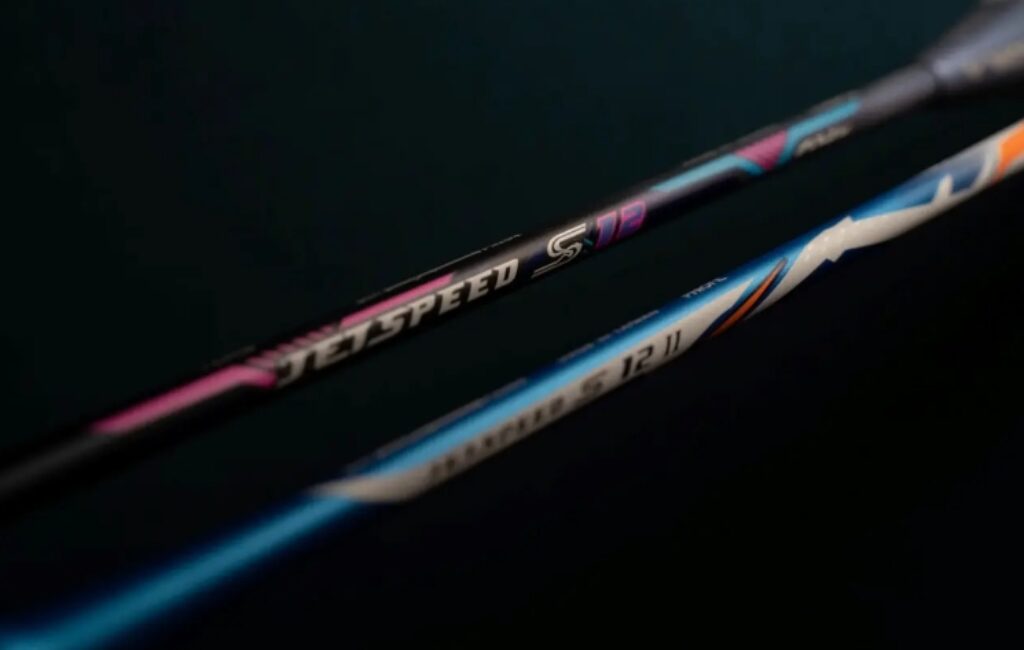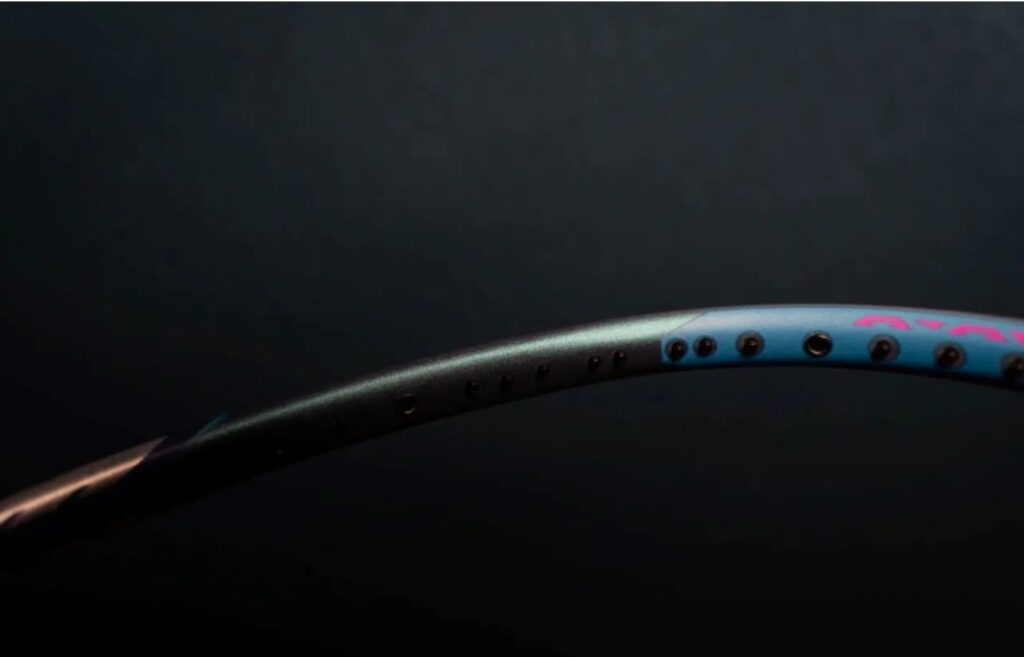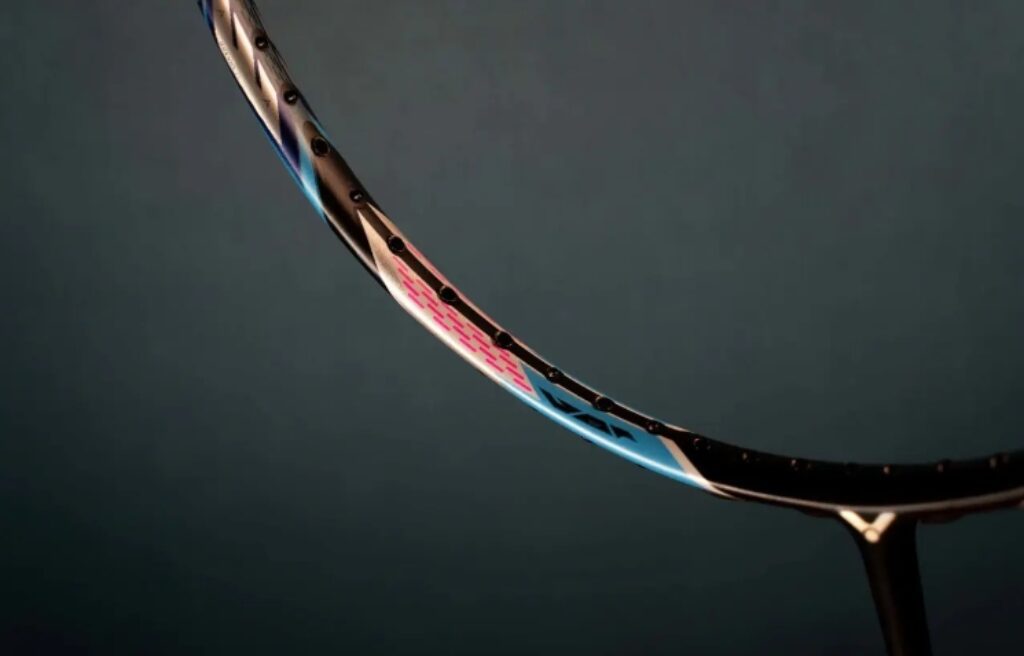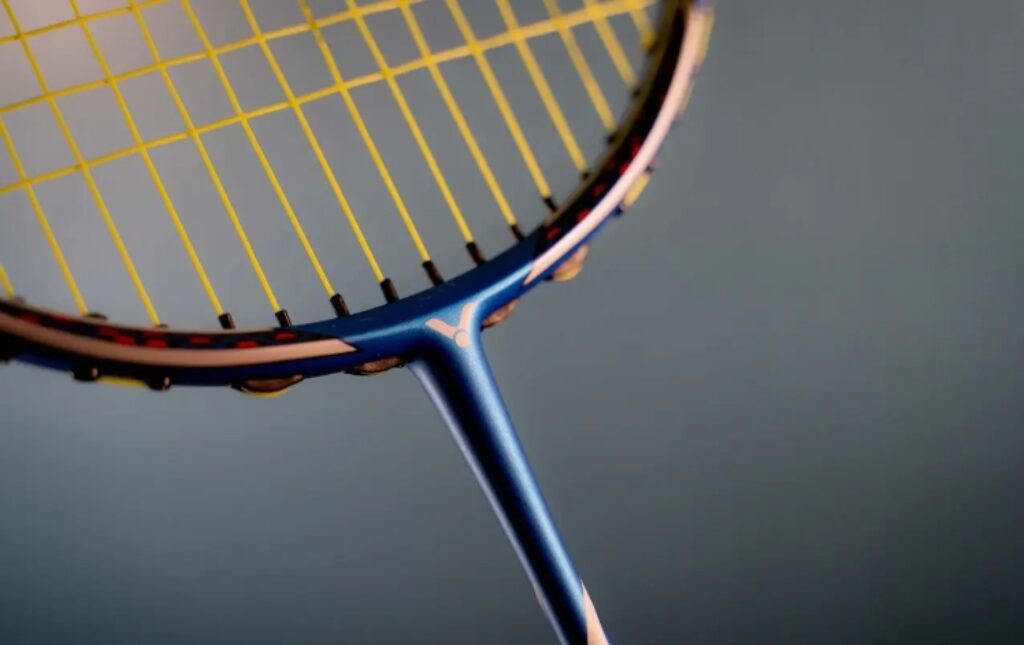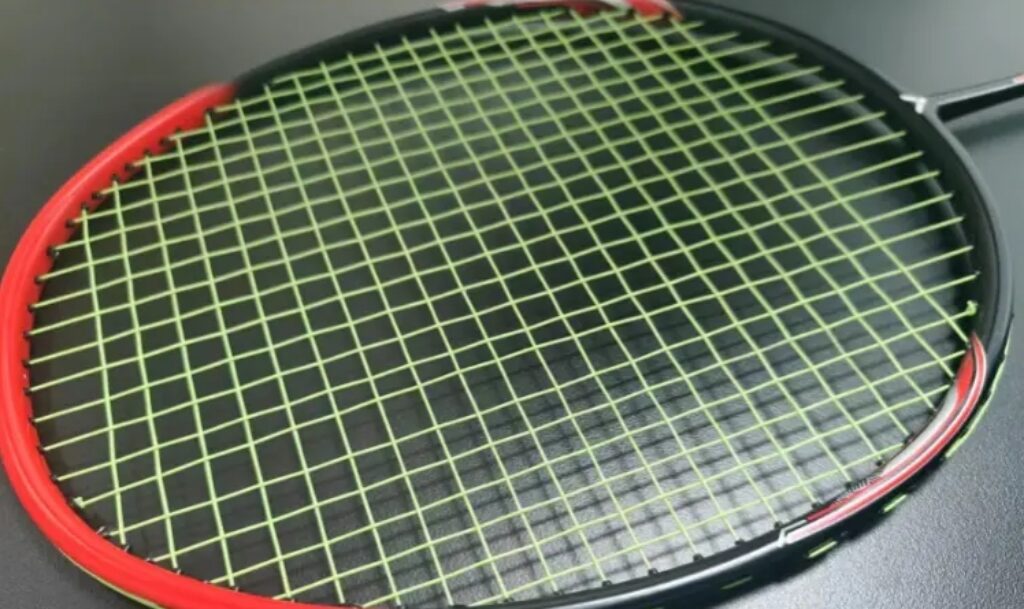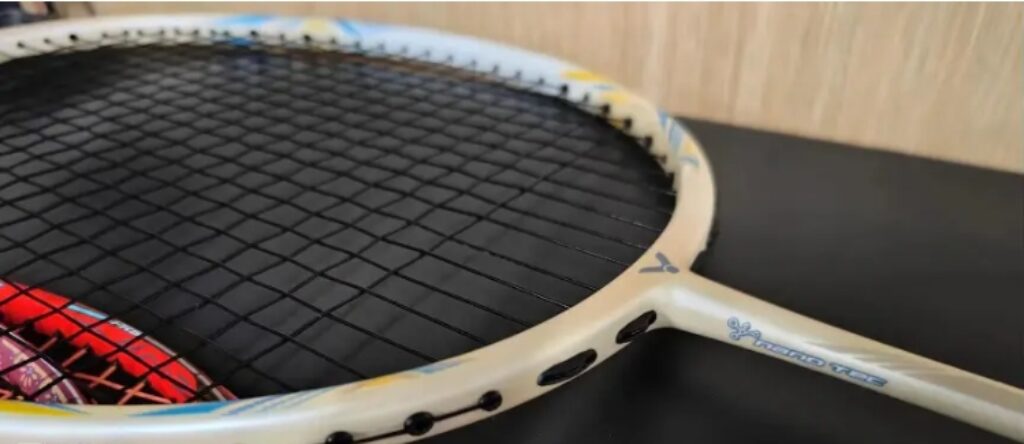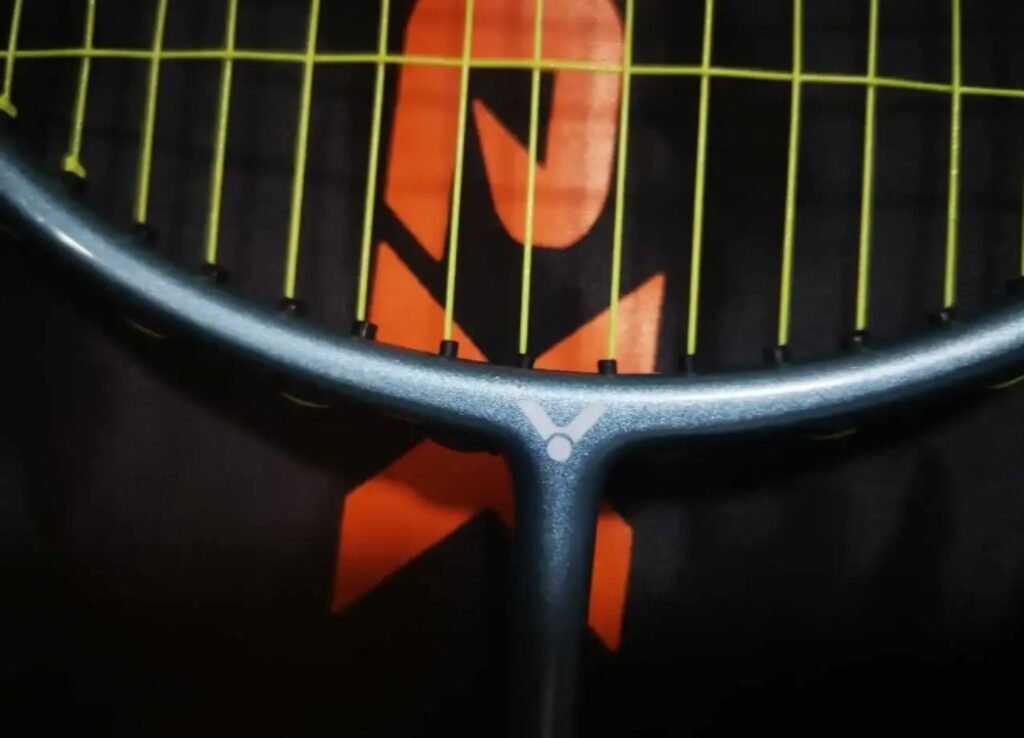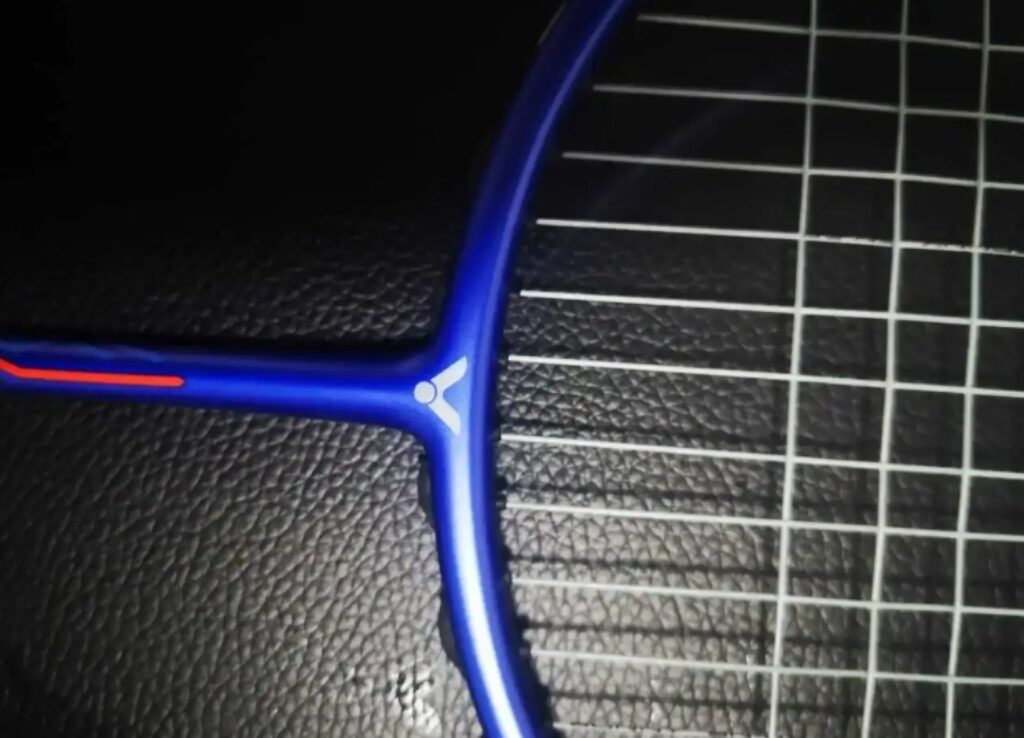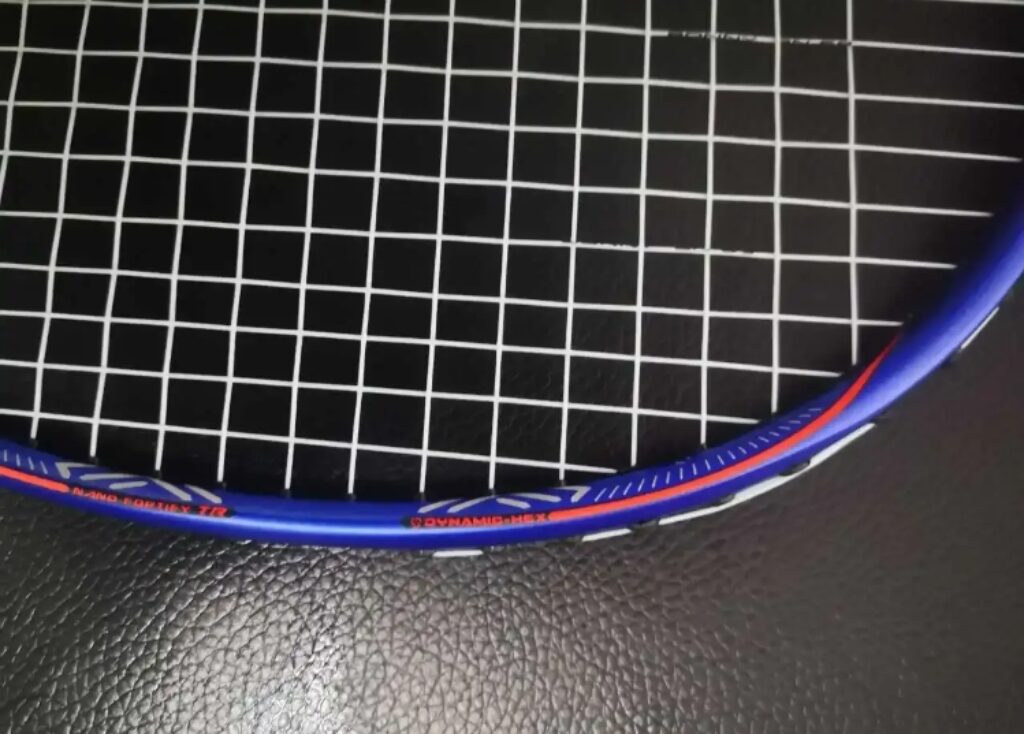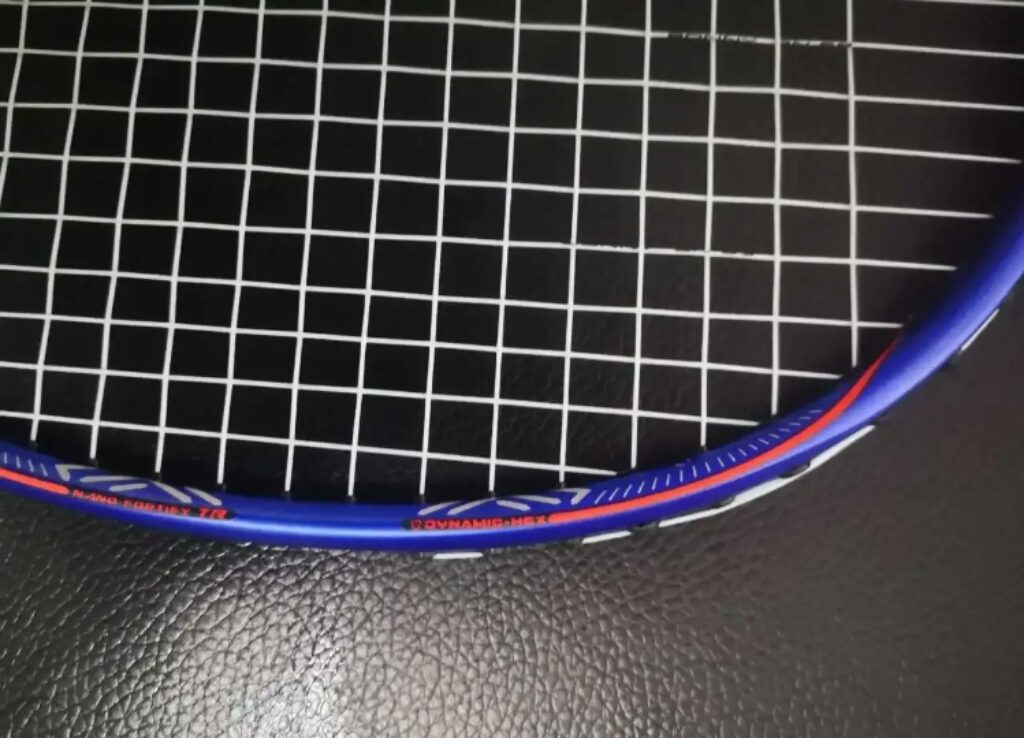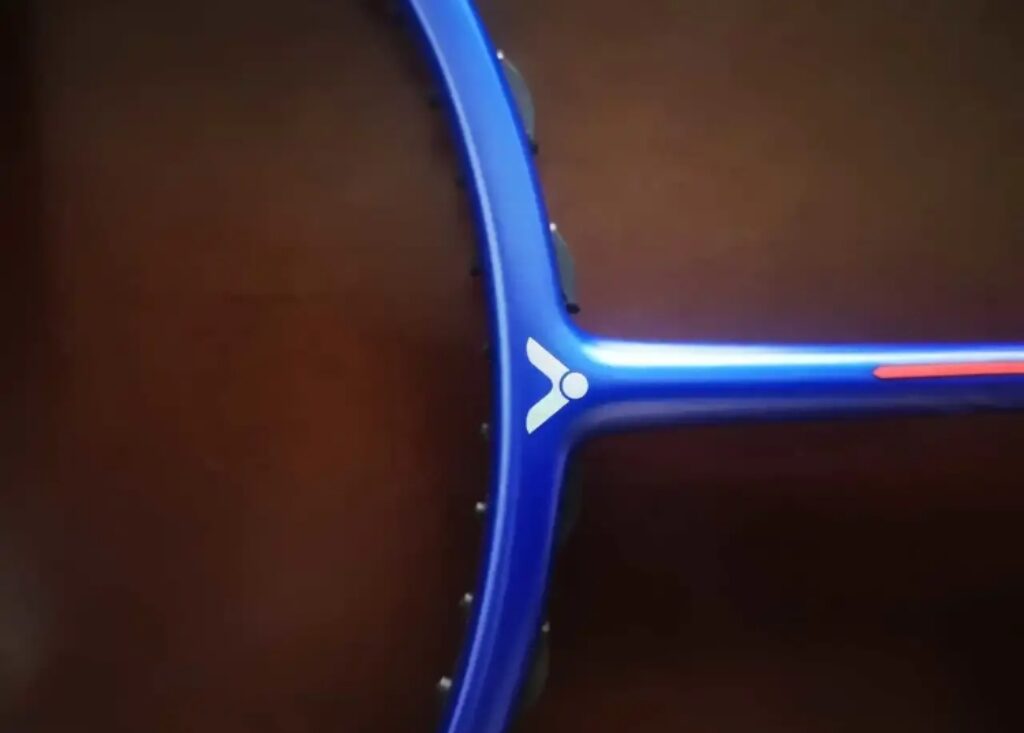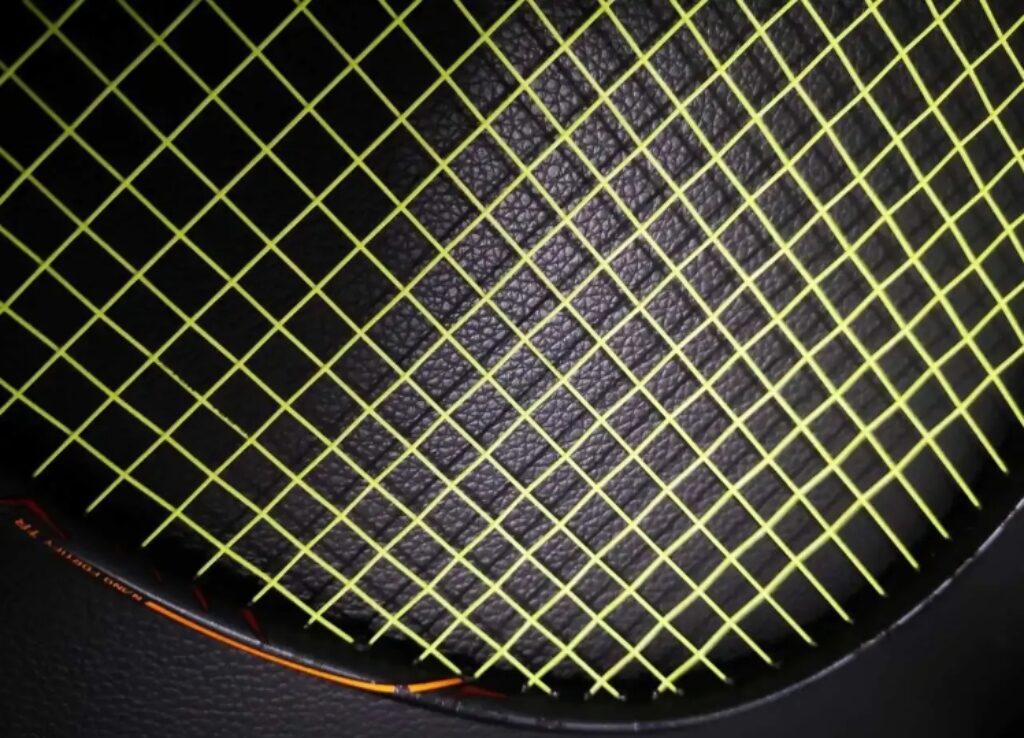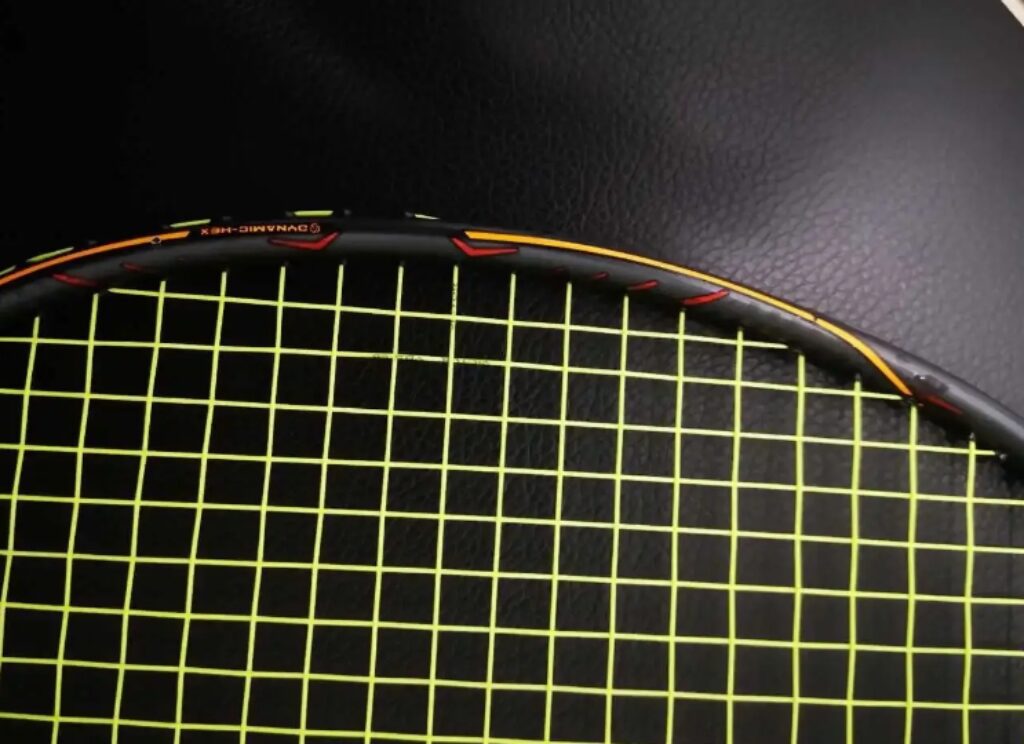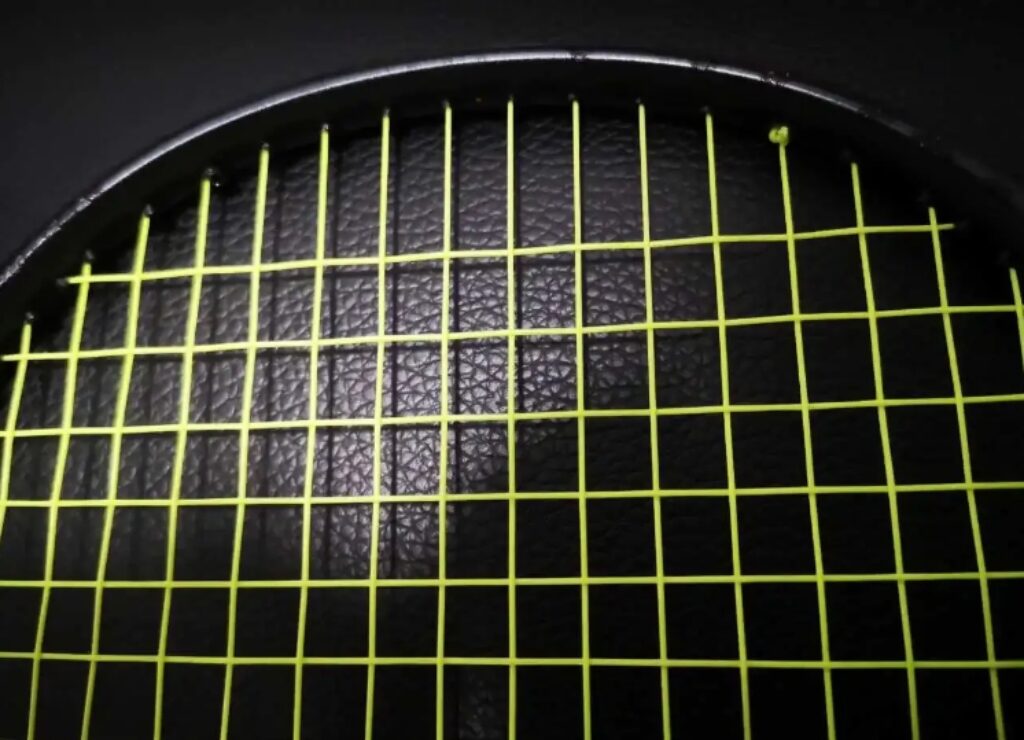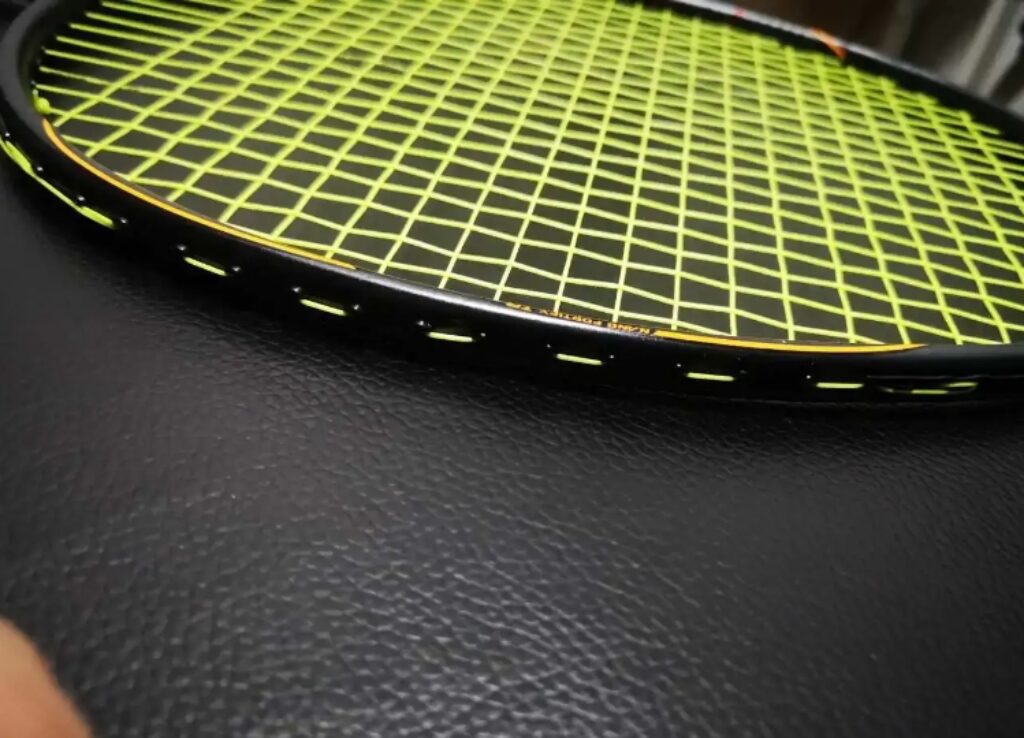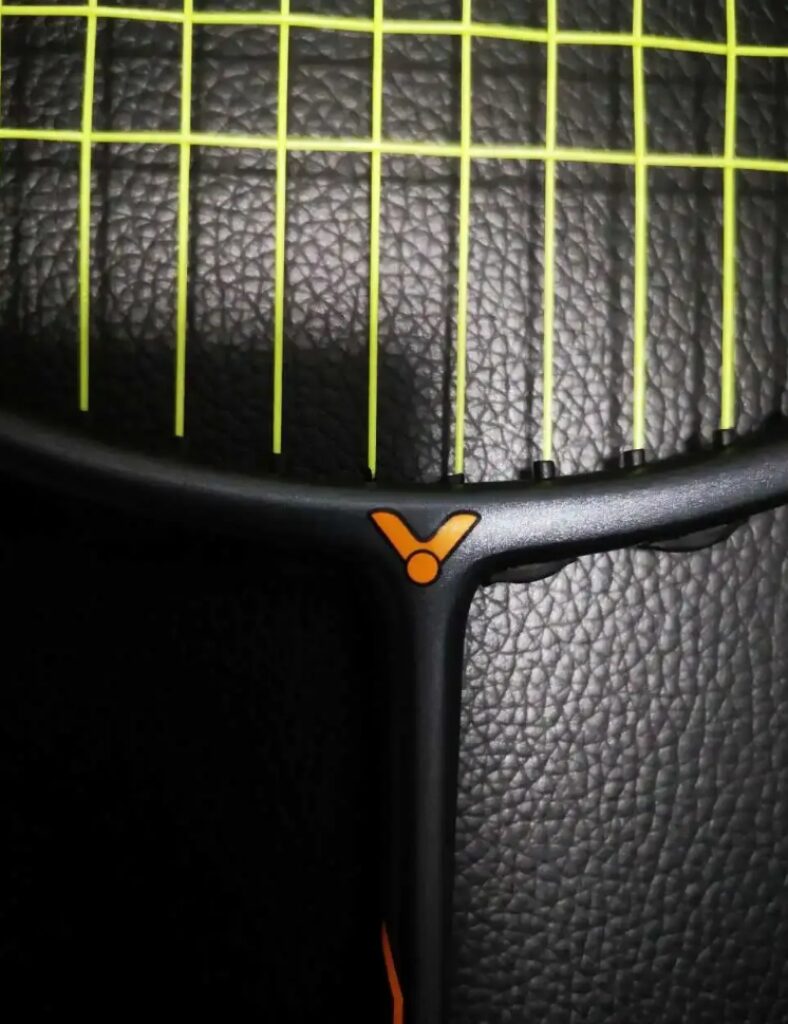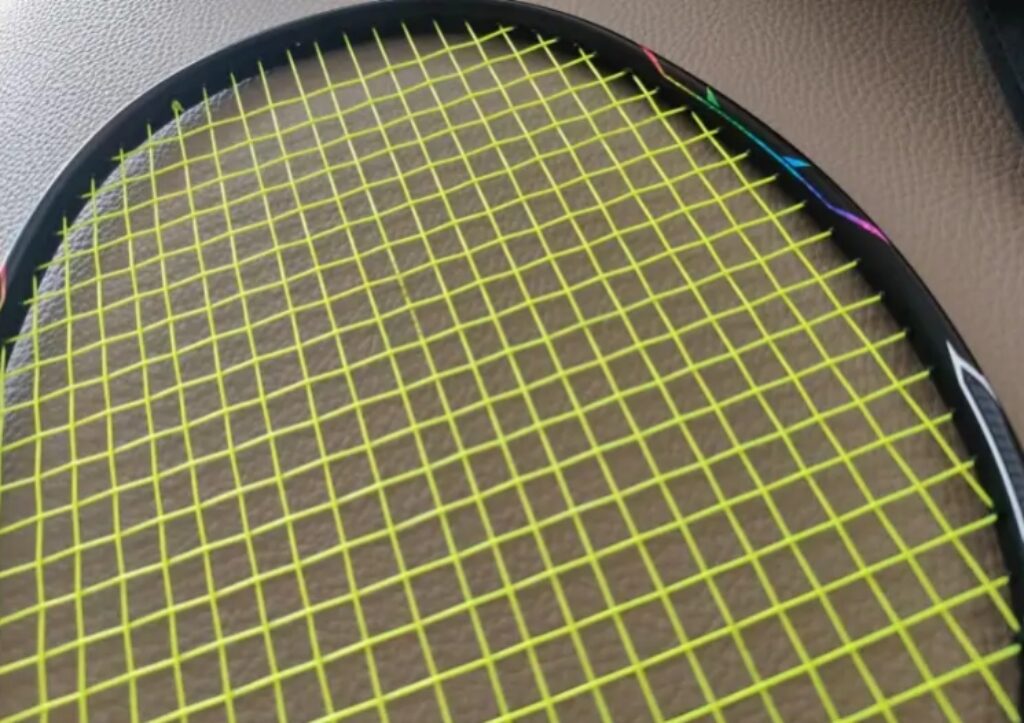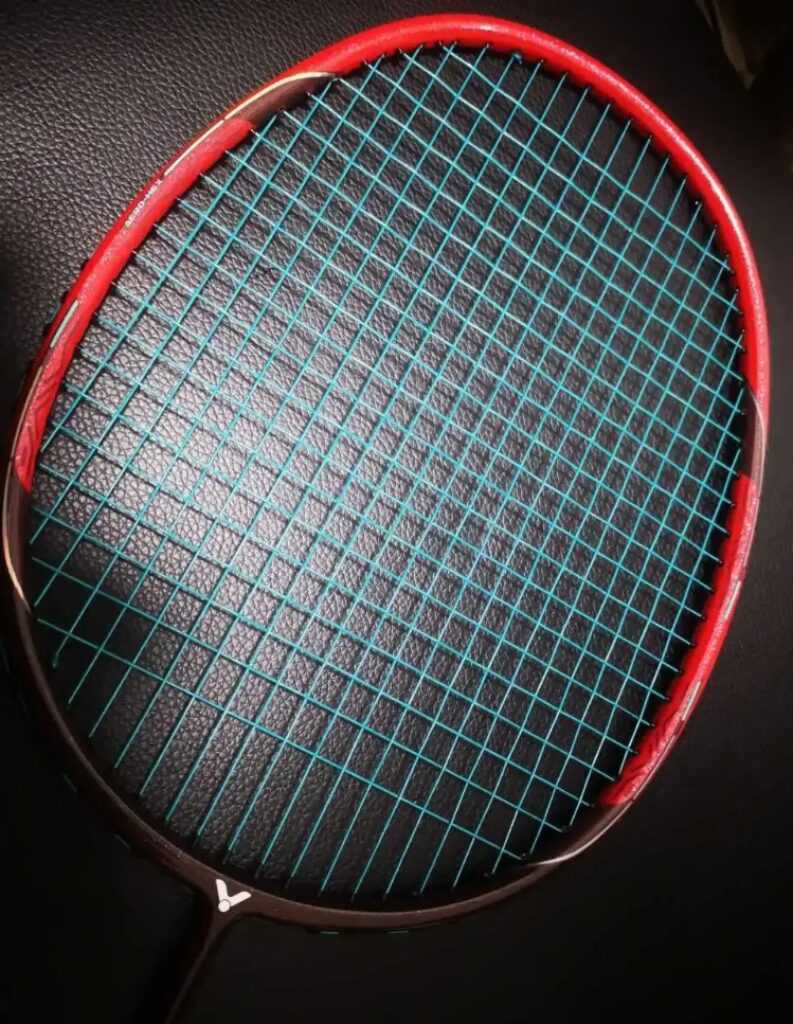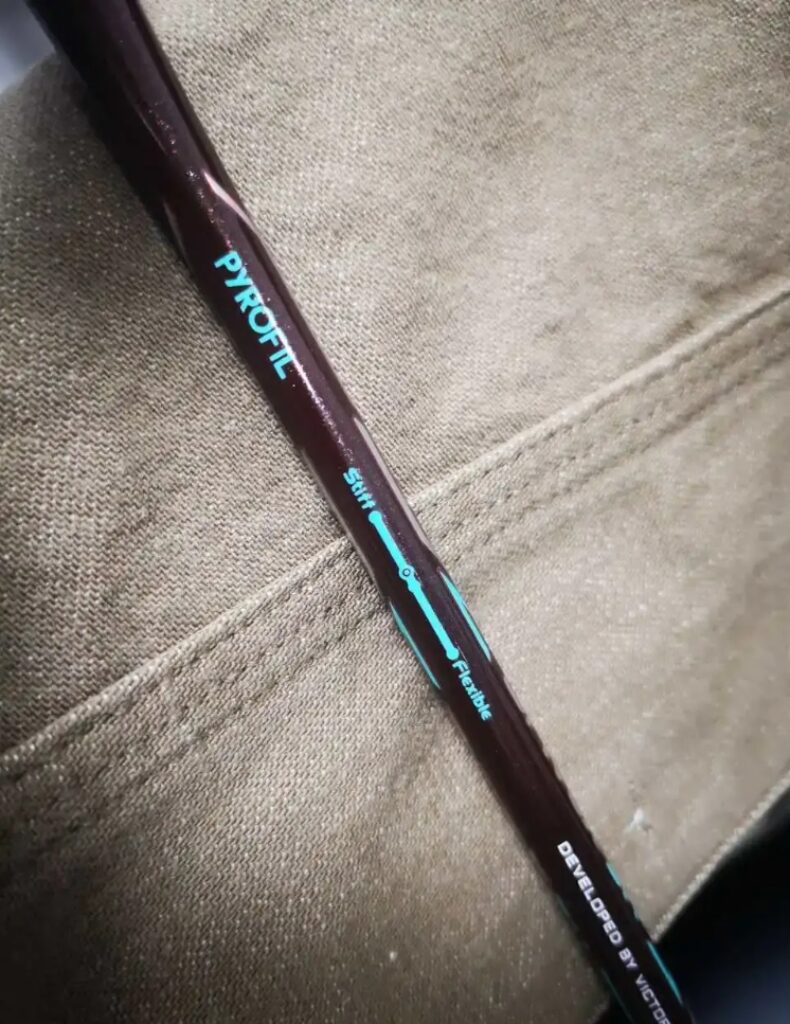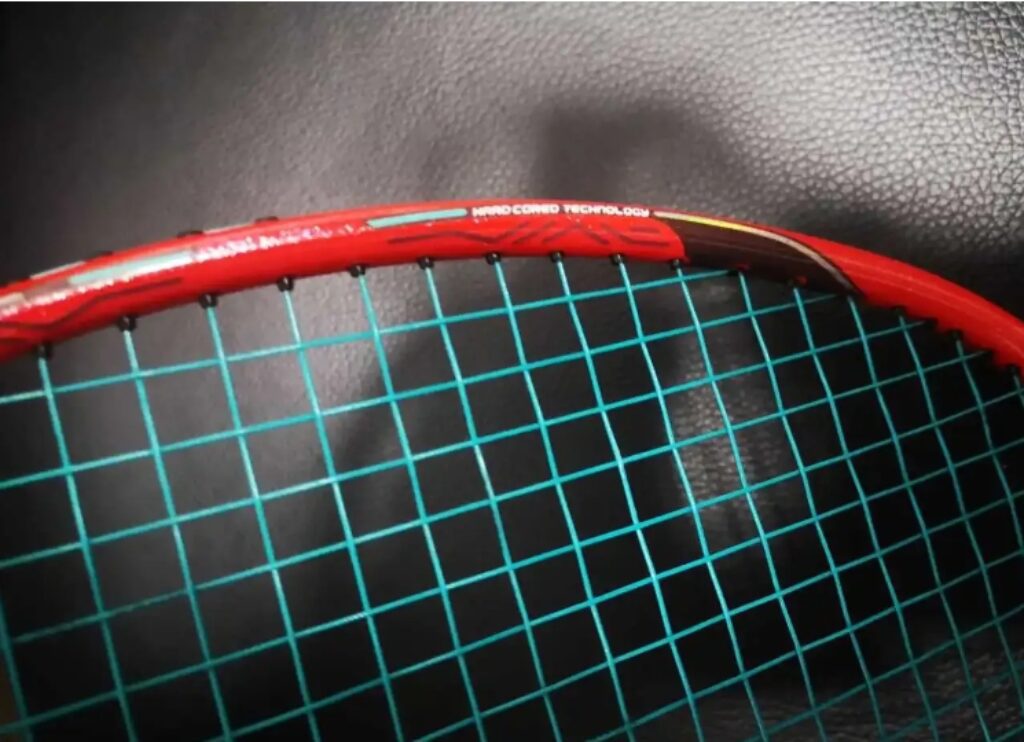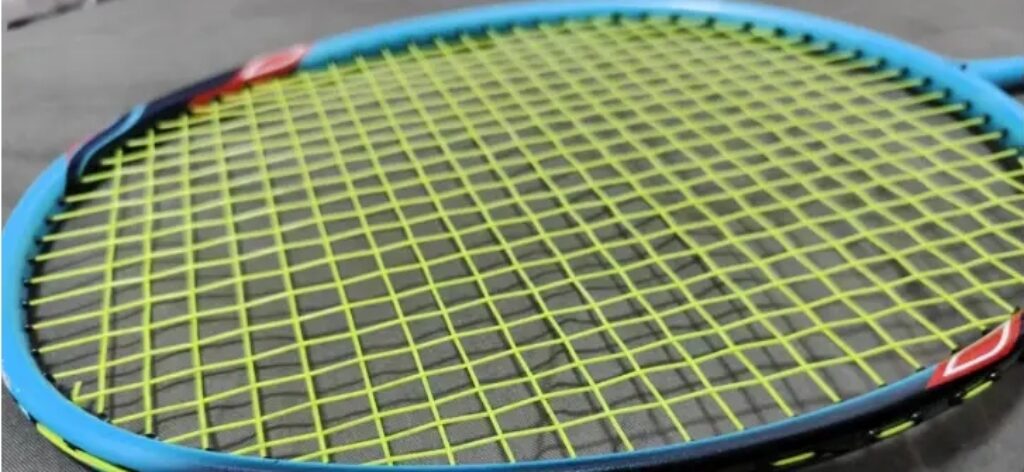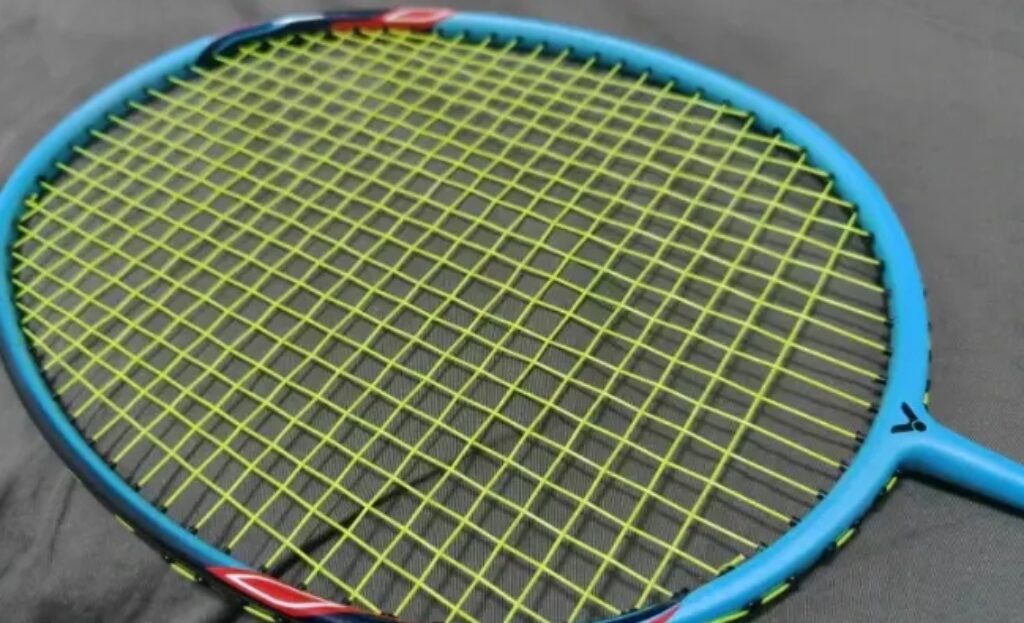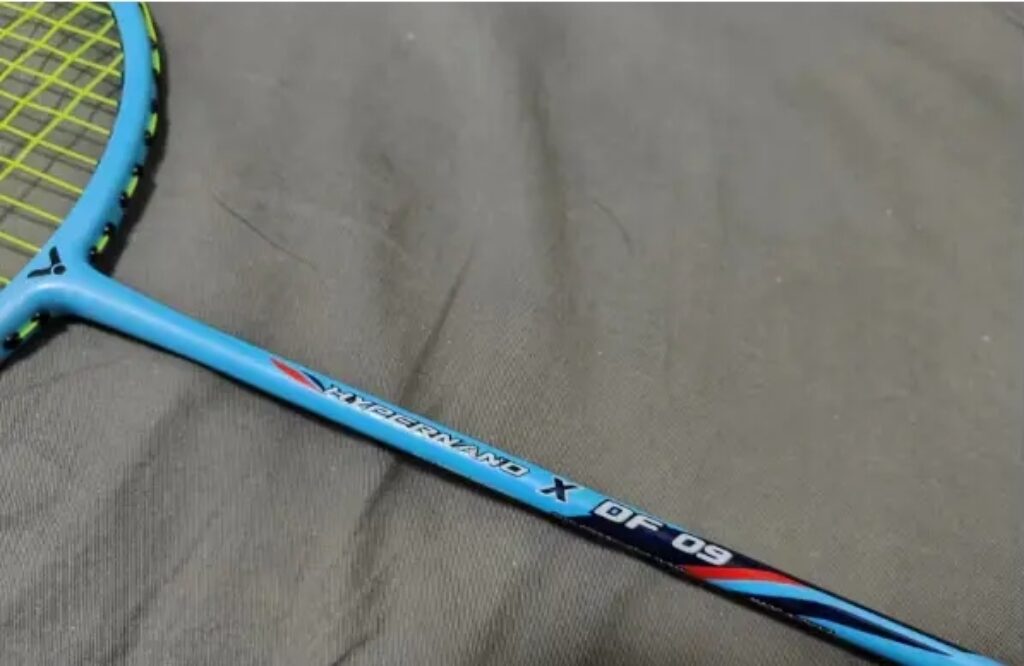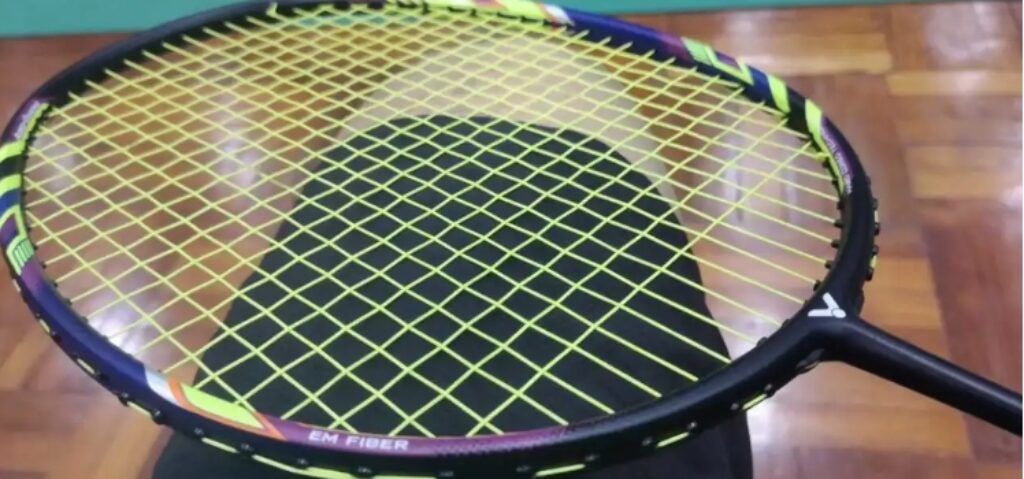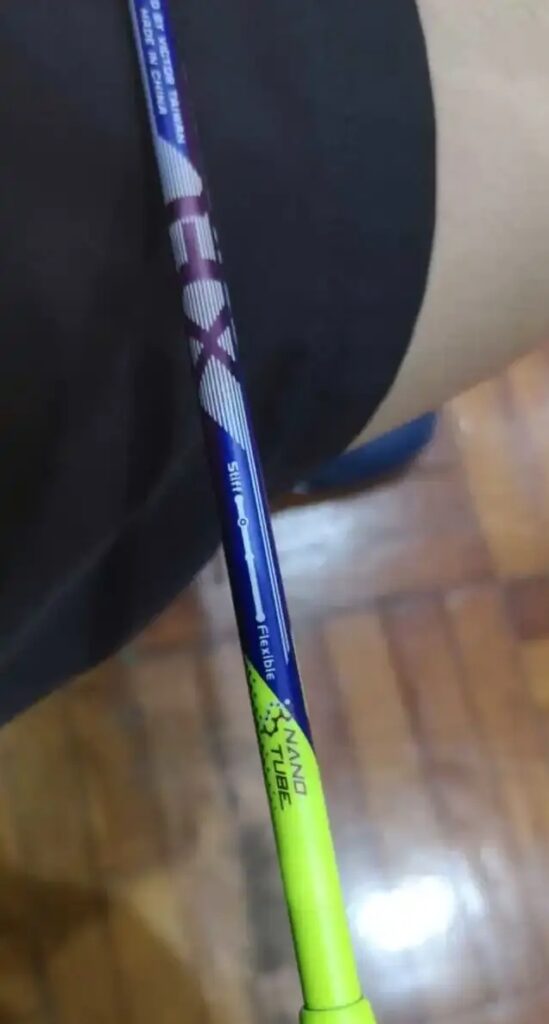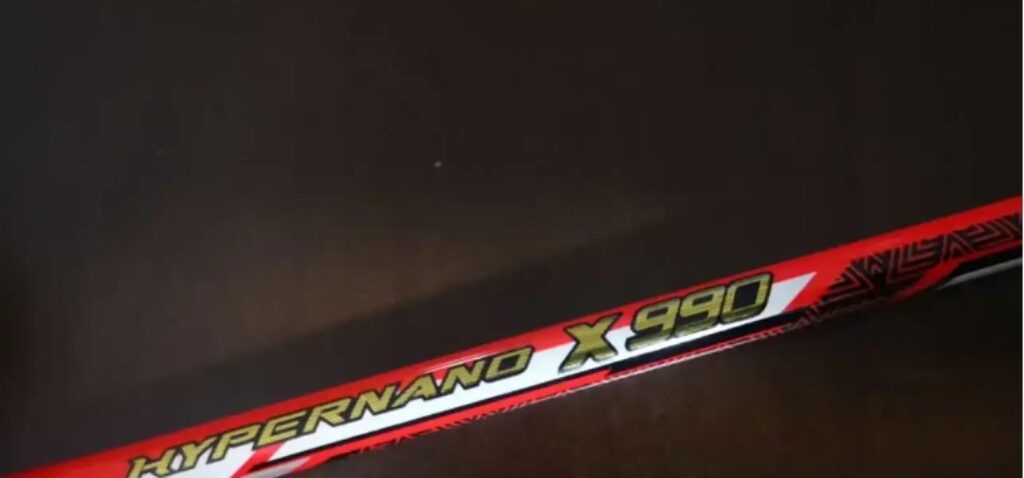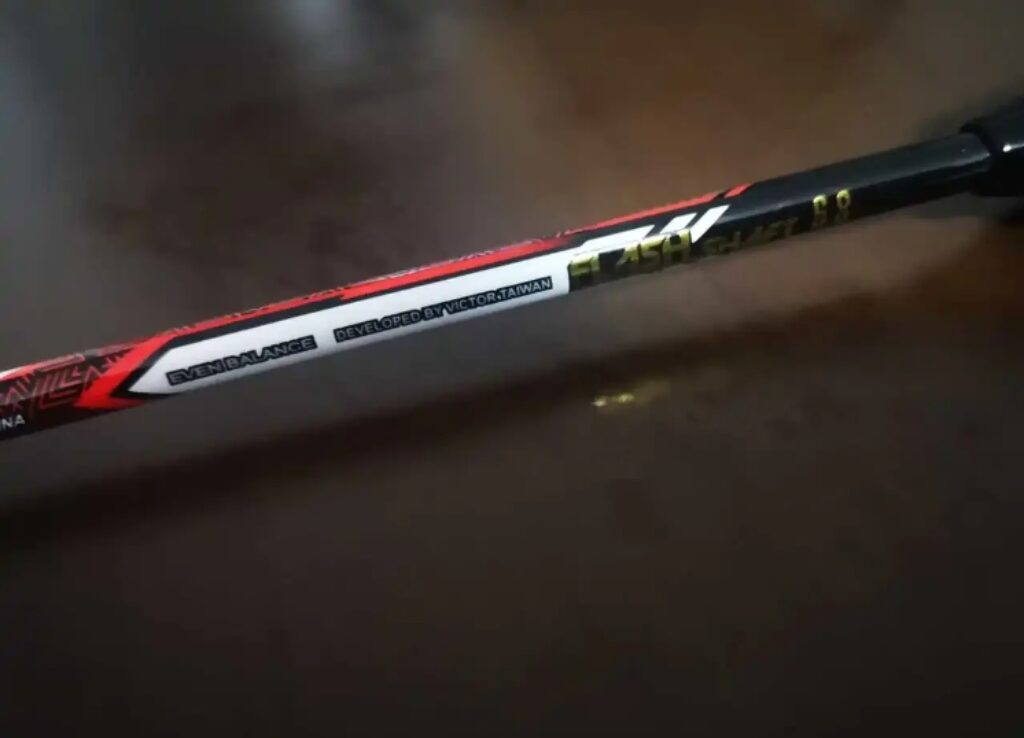Specifications: 4UG5, no base grip, total weight in use 87.9g, balance point 312mm, 6.8mm Babolat carbon shaft, 210mm length, medium stiffness, fully aerodynamic frame, 9-3 o’clock string grooves, 76-hole string bed, tension guarantee of 29 lbs, strung with BG80 at 25 lbs.
Sakura Blade! Beautiful! Saying this feels a bit like “AMD, yes!” The racket’s main color is light blue, decorated with a lot of stickers and decals, making it look quite extravagant. The pink base paint at the 4 and 8 o’clock positions of the frame, combined with small flowers, gives off a very girly vibe. It’s truly a “Sakura girl!” I thought I wouldn’t be into this kind of design based on the promo pictures, but once I had it in my hands, I couldn’t put it down. However, the paint is prone to damage, especially the decals or base paint on the aerodynamic sections, which can chip off after hitting the frame. Also, it’s a must to pair this with white grip tape.

But, after using it, I felt like it had a bit of aggressiveness. The head heaviness is quite noticeable, likely above the average for the speed-focused series, and heavier than the JS12 in my memory, though the swing speed is still high. Before using this racket, I had been using the VTFL-CW, which has a pretty poor feel, and when I applied the same power rhythm to the Sakura Blade with its noticeable head heaviness, the awkwardness came — I kept hitting the frame! And this happened right in front of the owner! The combination of head heaviness and high swing speed created a significant mismatch, unlike the JS12F, which is more responsive and quick. Although it’s not hard to drive, the hitting rhythm requires adaptation. This might also explain why it’s rare to see second-hand Sakura Blades, and they are often marked by chips and dents.
Honestly, aside from this, there’s no other entry barrier. The sweet spot is large and forgiving, and the Babolat carbon shaft is elastic enough, so hitting the sweet spot is not a problem, giving a speed boost similar to the Falcon. Moreover, it’s great for borrowing power, and the shaft is not stiff, making swings and strikes comfortable and reliable.
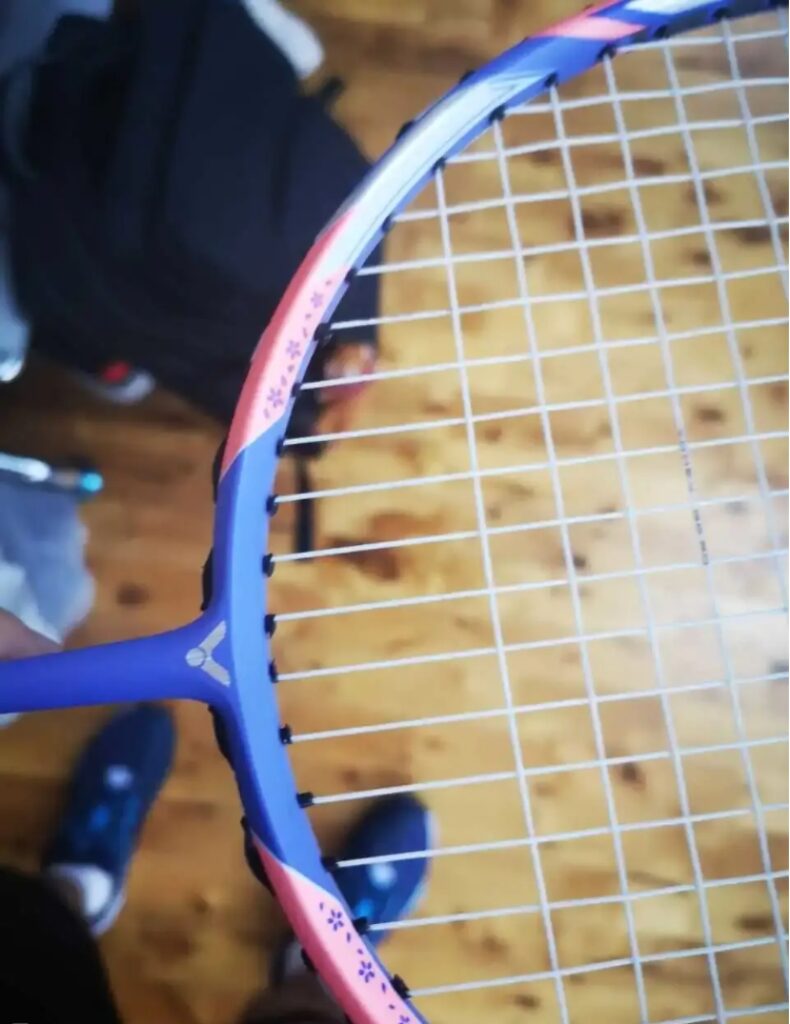
Regarding the aerodynamic treatment of the racket head, it’s not as thin or aggressive as it could be. The thickness is about the same as the JS12TD, which likely contributes to improved stability, making it a choice for many professional players who have used it in international competitions. By the way, even Liu Yang, the player known for his straightforwardness, has used it.
In terms of offensive performance, I prefer the JS12F over the JS12. If we’re only considering power smashes, then the entire JS series has the JS10/Ahmad as the benchmark, with the rest being at least one tier below. But compared to the JS12, the F’s head heaviness gives a more solid feeling during downward shots, and the reduced driving difficulty allows me to apply more pressure in the backcourt of doubles matches without being too cautious about conserving energy.
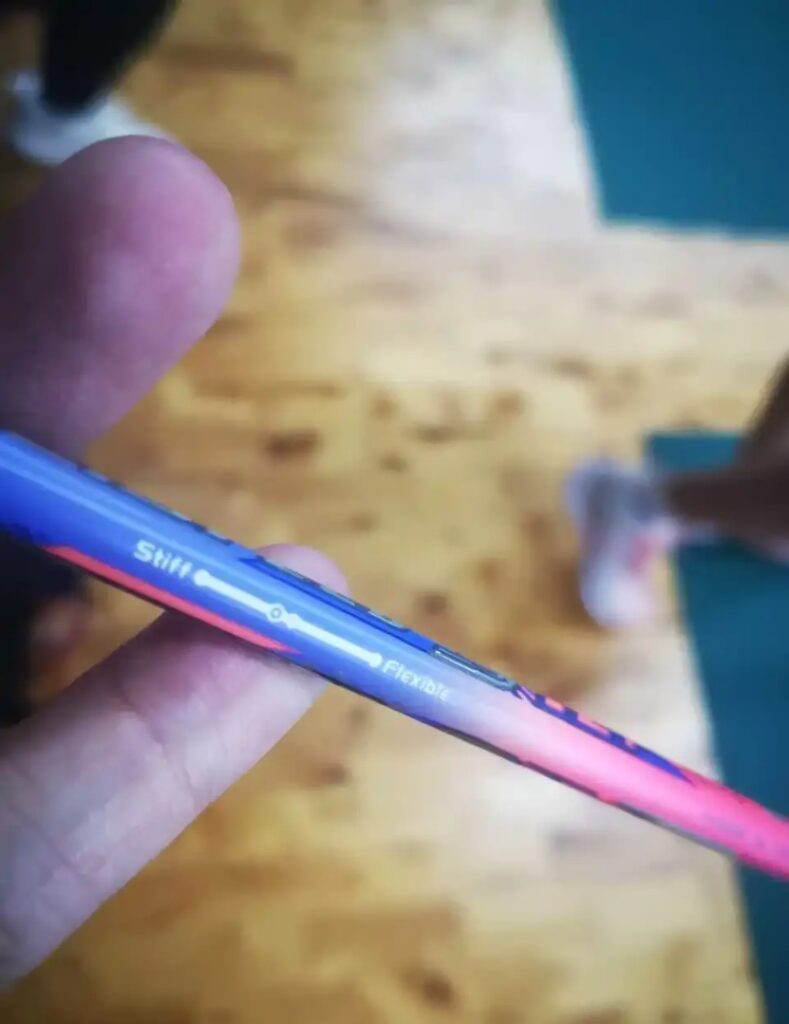
Similarly, the head heaviness makes the shuttle more likely to be pulled downward during smashes, reducing the chance of a floaty shot. I was surprised by how sharp the placement could be with this speed racket. Also, the lower driving threshold improves the user’s continuity in offensive play, and thanks to the use of TERS resin in the shaft, the recovery speed after deformation is quite good. During continuous downward shots, I didn’t experience any noticeable drag.
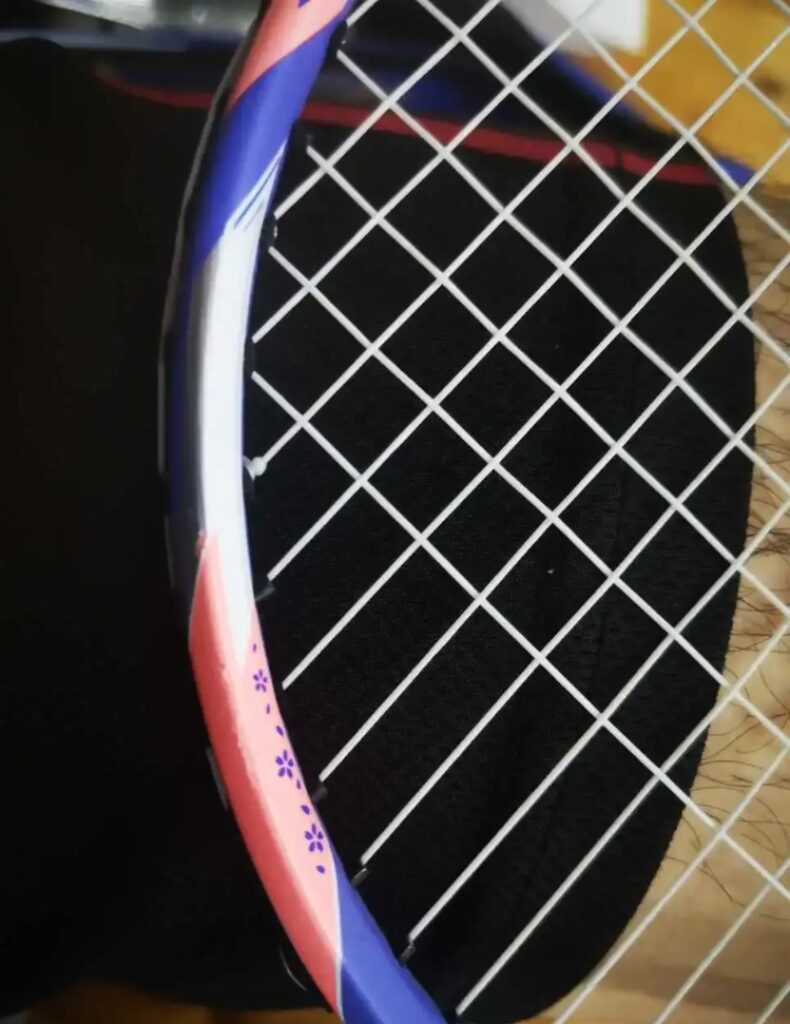
However, I found the JS12F a bit less comfortable in flat drives and blocks. The swing speed is fast, but the initial acceleration is slightly delayed, and the response in low-power shots isn’t as crisp and sharp. Due to the overall softer tuning, the string bed has a certain ball-holding feel, which works but isn’t as quick as the JS12 in fast-paced front-court exchanges. Upon closer inspection, its more tempered ball response also shows in downward shots, which might not appeal to players seeking a crisp feel. However, its defense and ability to handle passive situations are much better, thanks to its easy power transfer and drivability.
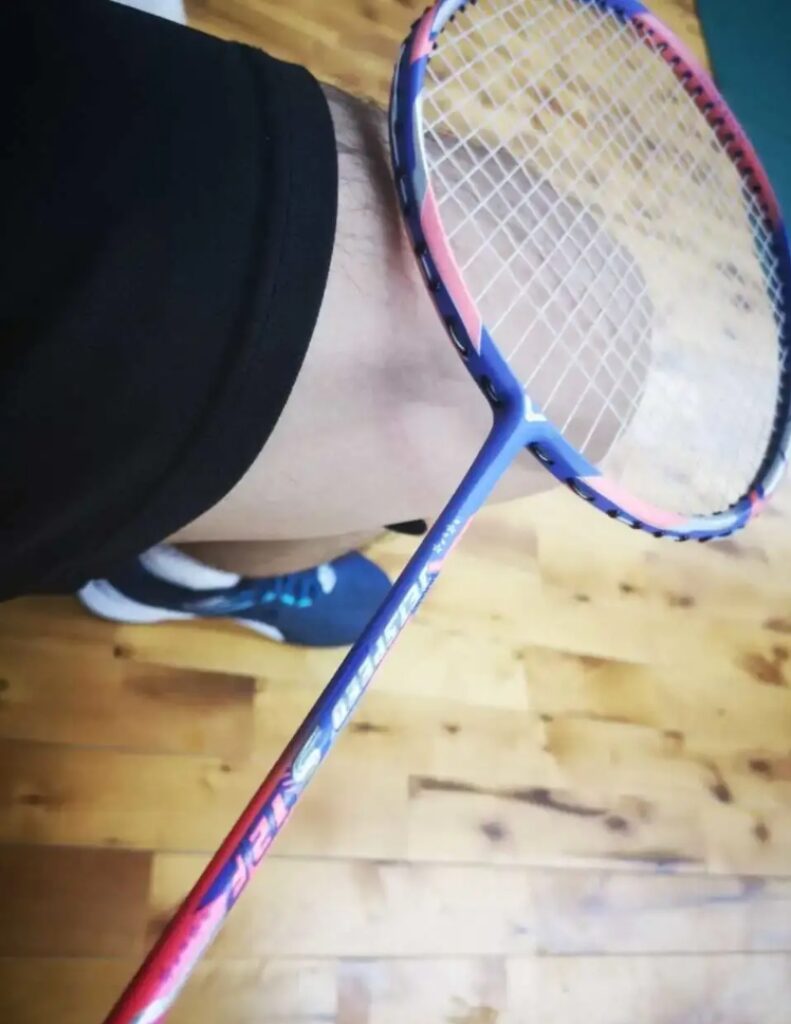
Additionally, I don’t know if it’s because the previous owner used it less or if it’s just a feature of the racket, but compared to the JS11/12 borrowed from a friend, I personally feel that the JS12F’s shaft doesn’t degrade as quickly during play, and its elasticity lasts longer, giving me more confidence during rallies.
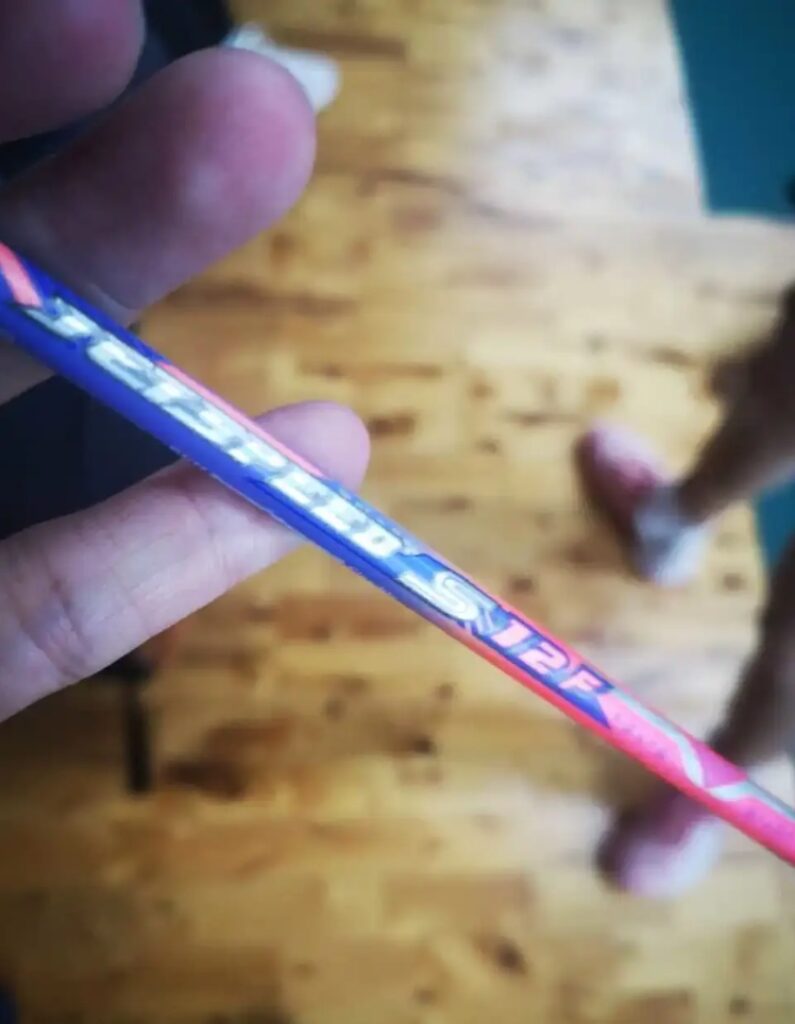
The popularity of the JS12F isn’t just due to its looks. I’ve seen many strong players happily bring it to the court. It’s a great racket with both external and internal qualities, and beneath its approachable exterior, it’s no slouch in doubles play.



